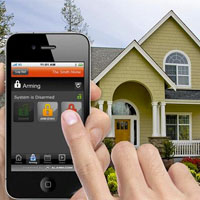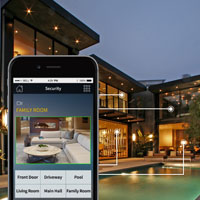Home Automation Equipment, Learning About It is Fun
The home automation system is a tool for controlling your home devices and communication devices as well. For instance, you already bought your laptop, installed your backyard watering system, and subscribed your pay-TV, but what are the equipments that you will utilize to get these things connected.
You will need interfaces like switches and remote controls for controlling various devices in your home. Different devices need different hubs for setting up connections. You will need multi-zone controls, video modulators, and distribution panels for audio distribution. You will need an interface card for your network and a router for every computer for setting up LAN.
You need to learn the basics by understanding each equipment description used in making your home automation possible.
1. Wiring closet. It is an enclosed small room specifically designed for keeping jumbled wirings and provides easy access when necessary. The best location for a wiring closet is the front space of your home so that external wiring (cables used on pay-TV) can be also kept. All input devices are set up in one location, a hub. This location can get messy due to the wirings different direction.
2. Patch Panel. The brain of the hub which controls every cable in your home. Take for instance, cable X is connected to speaker Y to Z stereo. Cable functions can be changed using the patch panel by unplugging one socket and patching or plugging it back into another. Make sure that you label the cables clearly.
3. Connectors. Connectors have various types depending on what the wirings require. Outlets also vary. Cables for your speakers may also use several sockets and plugs. Take this into consideration when laying wall sockets and cables. As much as possible, it provides you with flexibility. Likewise, don’t forget installation of ample power outlets.
4. Keypads and touch screens. Touch screen controls are the most expensive and intuitive types of interface while keypads provides a more simple way of communication with your gadgets.
5. Smart switches. The flexible and simple ways of initiating control is through smart switches panels which can also change dynamically. This advanced system is integrated with both entertainment and lights. It provides dimming lights options or increasing audio volumes. However, the switch used must be the same.
6. Remote controls. Universal remote control can operate televisions, air conditioners, blinds, and lights. But this equipment is very expensive because of its multiple controls. Simpler controller is another good option because it performs different tasks and eliminates the use of separate controls.
7. Computer software. Home automation can functions with the use of a software installed on a PDA (personal digital assistant) or PC (personal computer). Home controls can be done through a secure, special webpage. It means that your heating system and other devices can be turned off wherever you are.
8. Impedance matching system. This fixes problems concerning sound qualities (degradation impedance). Multiple connections of speakers on a single amplifier are possible however it reduces the amplifier’s overall power.
9. Multi-zone control systems. This works like patch panels in your hub systems. You can accept feeds from different audio sources and send it to specified amplifiers located anywhere in your house.
10. Distribution panel. This can spilt video feeds anywhere in your home. This component serves as the video hub of your network. A TV signal which is fed on the distribution panel can be send to all the televisions in the house. Amplifying the output is needed because splitted signals display weaker results.
11. Modulator. It manages the inputted feeds from different devices producing videos such as a DVD player, VCR, pay-TV receiver, and security camera. The modulator selects the input channeled on your distribution panel. Multi-channeled distribution panel and modulators send feeds to various rooms from various devices simultaneously.
12. Router. This is important whether you are setting up a wireless or cabled LAN (local area network). It accesses you to the Internet and network from the different locations in your house. All computers, printer, modems, and related peripherals connected to the router can communicate with each other.
13. Network interface cards. NIC connected to the routers also allows network communications in your house.
Learning the different equipment for your home automation systems is a fun experience.


